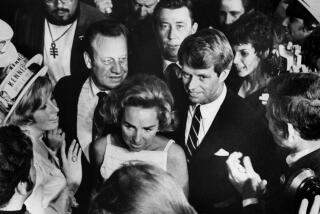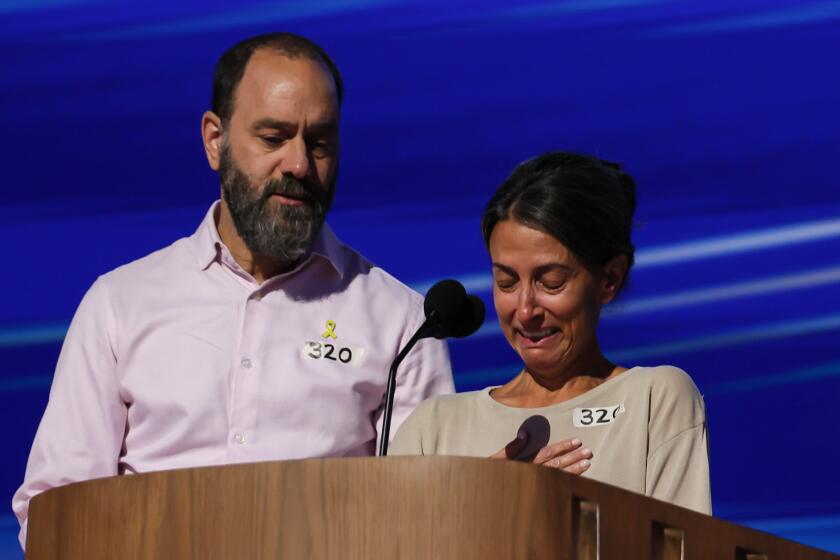Mary and Robert F. Kennedy Jr.’s tragic marriage detailed
In politics, names can become synonymous with an idea. “Reagan” connotes the best of what the Republican Party imagines itself to be. “Paul” — by way of perennial presidential candidate Ron and his son and current senator, Rand — evokes individualism and libertarianism.
But in all American politics, there is hardly a name that’s more synonymous with tragedy than “Kennedy.” Every story that arises about the storied family only seems to make that bond harder to dissolve.
This weekend, it’s the revelation of private court documents detailing the long, painful fall of Mary Kennedy, the late wife of Robert F. Kennedy Jr.
The new records appeared with an in-depth Newsweek exposé into Mary Kennedy’s final days before she committed suicide last month at the family’s estate in Bedford, N.Y. They were part of a confidential affidavit filed in 2011 as part of the couple’s divorce proceedings; the magazine declined to tell the Associated Press how it got the document.
In the filing, Robert Kennedy said he first met a 14-year-old Mary Kennedy in 1975 when she became friends with his sister Kerry. He was 21 at the time. He said he later “fell deeply in love with Mary in 1993” while he was separating from his first wife, Emily Black.
The confidential 51-page affidavit — only five pages were made public — is itself a kind of tragedy in bureaucratic miniature, in which informal expressions of affection are presented as evidence along with a stern list of legal demands both dark and telling of the problems Mary Kennedy faced during her long decline.
“She was blessed with a profound spirituality that had emerged from her struggles with the eating disorders that had, in her youth, caused her hospitalizations and nearly killed her,” Robert Kennedy said in the affidavit. “I loved the way she blossomed in crowds, the thirst for adventure that brought her alive during our frequent whitewater and wilderness camping trips. I adored her grand gestures and her careful attention to tiny details and the elegance and enthusiasm with which she undertook every enterprise.”
This comes just a page after a legal request for a protective order, where suffering becomes a kind of request list: “To require Defendant to stop her physical attacks against me; To require Defendant to remain sober in the presence of our children; … To require Defendant to stop stealing my personal property including suitcases, cell phones, toiletry kits, prescription drugs, wallets, passports computers, papers, briefcases and other items.”
Also: “To prohibit Defendant from following me on vacation trips or business travel where I have asked Defendant not to come.”
And then, darkly, one of the last requests: “To prohibit Defendant from threatening suicide in front of the children.”
It wasn’t always like this. Kennedy said she treated his first two kids well before their 1994 marriage, but that changed.
“Mary began to be abusive toward both my children and particularly hateful toward Kick,” he said, referring to his daughter with Emily Black, Kathleen Alexandra, by her nickname. After three years of marriage, he said, “I saw enough evidence of troubling conduct to trigger my first efforts to divorce Mary.”
He described finding items stolen from 9-year-old Kick hidden in Mary’s bureau, beneath some clothes.
Kennedy had finished the child-custody agreement by June 28, 2011, after which Mary Kennedy read it and pleaded with Robert Kennedy not to file it in court, he said. He described her calling “many dozens of times every day over the July 4th weekend, screaming, crying, threatening to destroy me and telling me she was on her way up to visit.”
A notary did not sign the court filing until September, scratching out the “June” on the form that had been awaiting Robert Kennedy’s final approval.
Eight months later, Mary Kennedy was found dead in the estate’s barn by the housekeeper, her husband and Robert Kennedy.
“Mary was as neat as Bobby was sloppy, and she had tied a beautiful knot at the end of the rope, attached it to a rafter, and hanged herself,” Laurence Leamer reported about the discovery in Newsweek. “The housekeeper fell to the ground in a fetal position and stayed there for several hours. As for Bobby, whenever a Kennedy had died during his lifetime, whether it was his brothers David and Michael or his cousin John Kennedy Jr., his lean face would turn gray with grief, but he never cried.”
“Now,” Leamer writes, “the tears flowed.”
More to Read
Sign up for Essential California
The most important California stories and recommendations in your inbox every morning.
You may occasionally receive promotional content from the Los Angeles Times.











